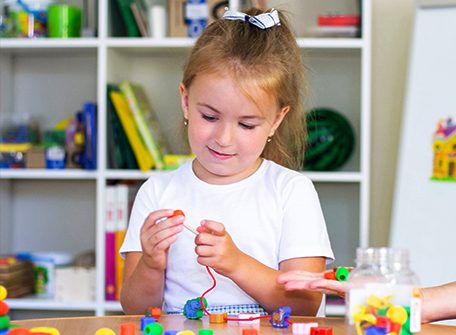ABA (applied behavior analysis) therapy is a treatment based on learning and behavior science. Children with autism and other developmental disorders use it to learn behaviors that will make their lives safer and more fulfilling.
In contrast to preventing harmless self-stimulatory behaviors (stims), ABA focuses on teaching necessary skills and stopping dangerous behaviors. Therapists help autistic people to improve skills such as:
- Social skills
- Motor abilities
- Play and leisure skills
- Self-care and hygiene routines
- Communication and language abilities
Neurotypicality is not the goal. The goal is to improve their lives in a way that is meaningful to them.
ABA treatments are many and varied. A single therapy or intervention will not work for everyone.
Typical Behavioral Interventions Include:
Early Intensive Behavioral Intervention (EIBI) – Schools, centers, or parents can use this therapy to help children under 5 develop communication skills and functional skills.
Early Start Denver Model (ESDM) – A program that develops communication and cognitive skills in children between 12 and 48 months of age.
Joint Attention, Symbolic Play, Engagement & Regulation (JASPER) – A model that improves communication and play skills in children from 12 months to 8 years old.
Natural Environment Teaching (NET) – Designed for children from 2 to 9 years of age, this therapy reinforces language, play, and social skills in a natural setting.
Pivotal Response Treatment (PRT) – A child-initiated play-based treatment that helps develop communication, self-management, and social behavior.
ABA encompasses all of these approaches, and people typically receive a combination of interventions. In ABA therapy, a therapist may work with a client to develop language skills using EIBI for a short period of time and then move to NET to practice the skills. ABA therapists should always set goals and choose interventions based on each patient’s unique strengths, needs, and desired outcome.
ABA interventions are beneficial for young children, but can also assist autistic adolescents and adults to achieve greater independence or limit harmful behaviors.
How Does ABA Therapy Work?
There is no one-size-fits-all approach to ABA treatment. ABA therapy plans are designed by a qualified ABA therapy specialist who evaluates the autistic person’s individual needs, abilities, preferences, interests, challenges, and family situation.
ABA therapy specialists at Hope AMC work with autistic individuals and their care team to identify a goal and break it down into small steps. A goal may be to learn to wash hands, for instance, which would include the following steps:
- Wetting hands
- Rinsing hands
- Lathering hands
- Turning off the faucet
- Picking up the soap
- Drying hands with a towel
Success is rewarded with a positive response, such as a reward or natural reinforcer.
The person is generally redirected toward the practice skill when unwanted behaviors occur. A reward might be praise, a toy or book, or TV time, depending on the person and their interests. ABA practitioners mostly use positive reinforcement and repetition. Using punishment to achieve a desired goal is never a wise choice.
Each therapy session collects data to measure progress. Family members are regularly consulted to discuss progress. In the event that the child doesn’t progress, the ABA therapy specialists at Hope AMC can adjust the therapy plan accordingly.
A key technique of this therapy is a Positive Reinforcement Approach strategy that takes advantage of the psychological propensity that if the child is given something they value for a behavior, she/he will repeat that behavior more often in the future and gradually change their behavior.
Hope AMC provides extensive one-on-one sessions of the best ABA therapy near me in Dubai to the children, allowing them to get the help they need to overcome their challenges. As an integral part of this therapy, parents and guardians can encourage their children to practice the skills at home and reinforce positive behavior constantly. During the program, children will develop socially significant skills, communication skills, and the ability to interact socially.
Want to consult one of our ABA therapy specialists? Book an appointment today!






